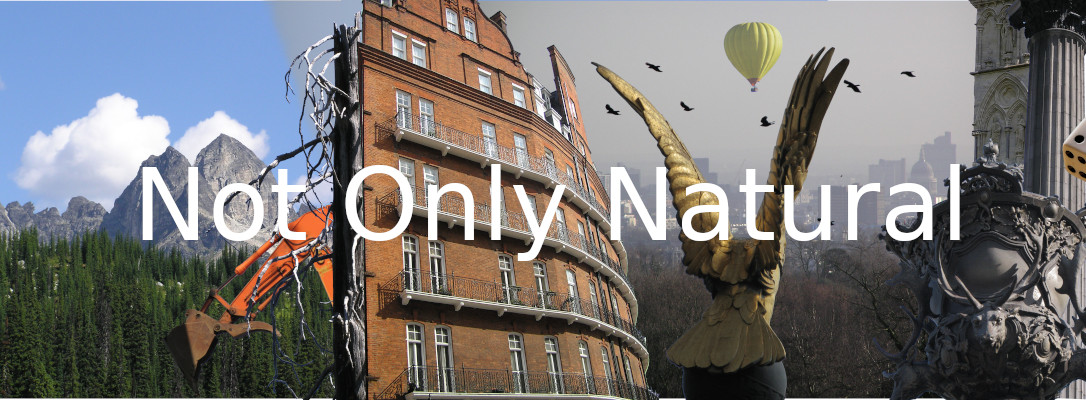
Nature, science, language, values, feral beliefs...
Perhaps the best advice is really to spend some quality time among the trees, enjoying the presence of an old forest nearby. No, old forests aren't so common anymore, but even a remnant stand of old forest, or an individual tree, observed closely, can be both calming and revealing. But, what roles do trees, young and old, play in our crowded, frantic civilizations? Responses to questions like this tend to be utilitarian. That is, thoughts turn to tangible benefits "provided" to us - humans. So we plant some trees, they grow, and then they can "give" us shade, oxygen, pleasant landscaping visuals, lower ground temperatures, and so on. That's one way to think about it. How did we learn to think this way?
Trees are quite beautiful. Perhaps because there are so many of them it is harder for us to appreciate this. There have to be many, many trees in order for there to be climatic and other conditions necessary for forests to exist. Not only are there zillions of trees, but many of them seem "untidy", "misshapen" or "stunted"...maybe even "decadent". Might we wonder about where and how we learned our standards of beauty?
Now that industrialised humanity is the main factor modifying nature, it seems responsible to think more carefully about how we conceptualise nature.
Previous posts for 2023 : April 2023, May 2023, June 2023, July 2023, August 2023, September 2023, October 2023, November 2023, December 2023,
Previous posts for 2024:
January 2024,
Comments can be left below these posts (scroll down).
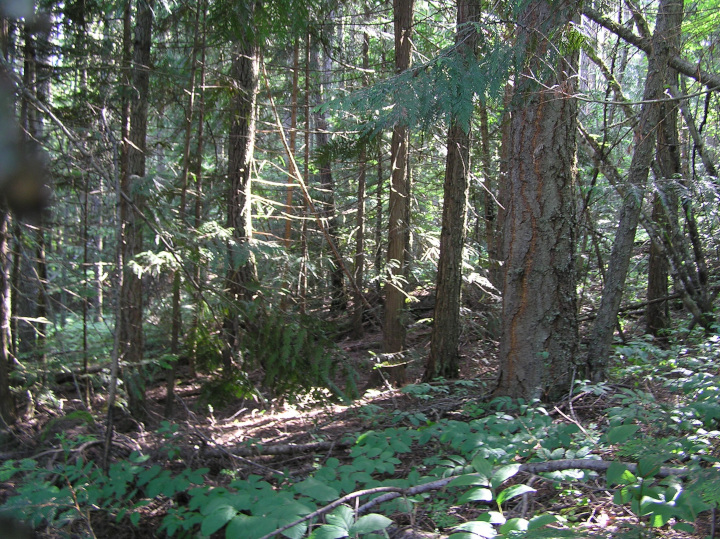
Toward a Vegetative Olympics
I have been wondering lately (not for the first time) how we might think about other organisms without blindly applying concepts we mostly use to describe human actions and behaviours.
People sometimes say that trees and other plants "compete" with one another. Do they "struggle" to secure space and light? Sometimes other people suggest that plants actually "cooperate". There's a lot of conceptual space between those opposites, but even more completely outside them. Obviously humans compete, and sometimes cooperate, but the various meanings of that usage seems completely inadequate when applied to natural processes involving other plants and animals.
Do trees "know" things? What could that possibly mean? Trees seem to be fully engaged in their environments, but what sense of our concept of knowledge would apply to their existence?
Do other creatures, let's say plants, strive? In what sense could they act with a human sense of purpose? It seems to me that too often we apply words related to concepts with deep roots in human experience without noticing how that clouds our observation and understanding of nature.
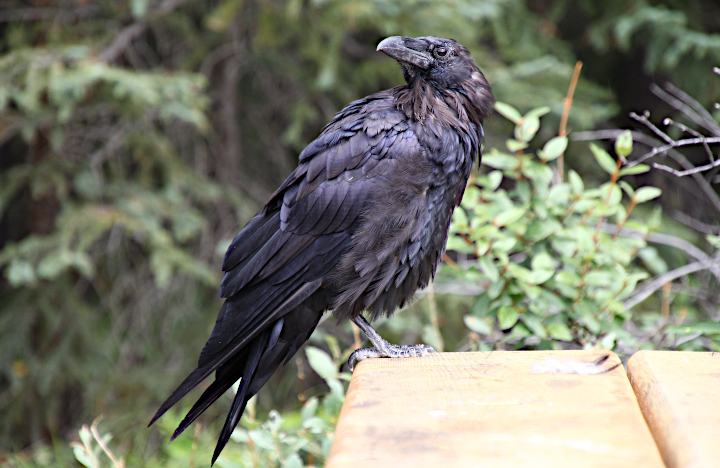
Yes, But Are Plants Intelligent?
Perhaps it shouldn't be surprising that when humans contemplate nature they resort to using language that is soaked with anthropocentrism.
The word "intelligence" can mean a confusing range of things and can be used for many purposes. For example, there has been speculation about the intelligence of dinosaurs based on anatomical analysis of their fossilised braincases, and there are common claims about the "intelligence" of computers running "AI" programs, based on "performance" on specific tasks - tasks set up by humans.
It seems to me that something called intelligence must be the result of lived experience. It can't be packaged or delivered to order like isolated "facts". It is acquired by living organisms in the course of their lives as a result of many interrelated processes. It is necessary attribute for them to function effectively (well, to exist) in their particular environment.
It is now becoming fairly common to read criticisms of "AI"-infested computers that explain that they cannot "know" or understand anything, but can only regurgitate some computed selection of material they have been trained on. Contrary to some claims, this is not at all what humans do in the process of learning whatever they learn. Humans don't ingest vast databases of text or images and then statistically associate tokens with the highest probabilities of forming a historically commonly occurring sequence. What makes sense to a human depends on many other factors, and includes much that is in no existing database.
Whether some dinosaurs were more "intelligent" than modern crocodiles or maybe less "intelligent" than modern birds doesn't seem as important as asking why humans seem so obsessed with - and confused by - such questions. "Are plants intelligent?" "How can they think without a brain?" "Are insects intelligent?" "But their brains are so small." The implicit subtext is usually just: "How much are these things like us? Sometimes it's anthropocentrism all the way down.
Understanding that machines cannot be intelligent might provide one advantage: people will not feel ethically compelled to stop eating them.
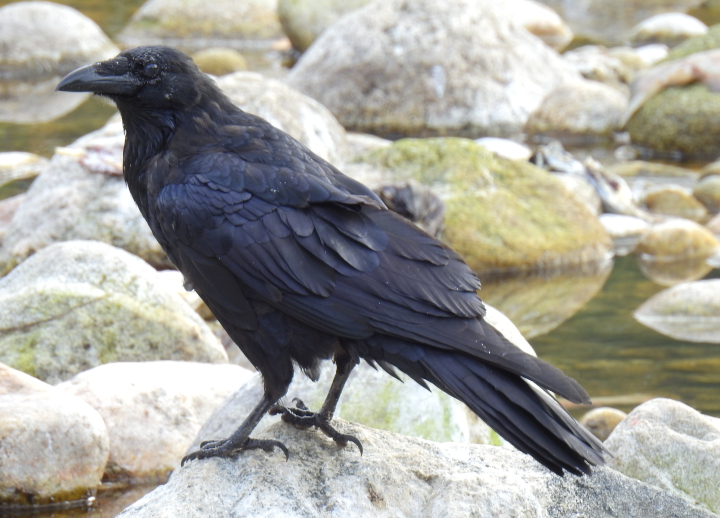
Are There Enough Humans Yet?
Periodically, we
are treated to articles in the
popular media speculating about
the existence, or extent, of
"intelligence" in other species.
Lately there seems to have been
renewed interest in octopusses
and "what their alien minds
might tell us". I'm not sure why
octopusses would want to "tell
us" anything, but it is telling
that humans have assumed that
octopusses or other creatures
would not have
experienced the evolution of
intelligence in order to thrive
in their environments. We might
ask: what "kind" of
intelligence? Certainly not a human
kind of intelligence. Or is that
all that really matters?
Even in the intermittent, anthropocentric articles expressing wonder or surprise while recounting examples of intelligent animal behaviour, there seems to lurk an undercurrent of unease. The notion of intelligence in other species can obviously be uncomfortable for anyone who might want to exploit or consume other creatures - or even for those who know someone who does. (Some people apparently feel conflicted enough to cease eating squid and octopusses after they learn of their intelligence.) Individuals who might be possessively proud of any signs of intelligence in their pets, might not be so excited about any evidence of intelligent "alien" species among us. (But people seem to have general problems with the notion of "aliens" and the term appears to have become a cause of hyper-excitation.)
Creatures that inhabit environments vastly different from those humans experience (pretty much all other creatures) could reasonably be expected to have developed very different forms of intelligence from the one our assumptions are based on. (Just how intelligent is it to base one's reasoning on unexamined assumptions?)There are many examples of animal behaviour that show some resemblance to human behaviour, and it is important to recognise such similarities. But it would be a mistake to impose a human mental framework on those behaviours. Other creatures don't need fragments of humanoid essence to increase their legitimacy.
What is this obsession with comparing human intelligence with that of other creatures? Is there no other way to conceptualise our relationships after all this time? Some creatures run faster than humans, some swim better and hold their breath longer...some can fly. We don't bumble into implicit competition with them with regard to those abilities. Humans feel compelled to compete with each other in terms of "intelligence". Considering that the concept is so poorly defined and understood, maybe that's not surprising. It does seem pretty childish, however.
And then, what might we think about people deciding not to eat other creatures if they seem intelligent? It doesn't seem to be just a matter of not wanting to harm supposed "kindred spirits". People know full well that other creatures feel pain, and yet they eat them anyway (and perhaps try not to think about it). We do a lot of destructive things to natural processes that we try not to think about. If we think about them, we might feel compelled to modify our behaviour.
Even in the intermittent, anthropocentric articles expressing wonder or surprise while recounting examples of intelligent animal behaviour, there seems to lurk an undercurrent of unease. The notion of intelligence in other species can obviously be uncomfortable for anyone who might want to exploit or consume other creatures - or even for those who know someone who does. (Some people apparently feel conflicted enough to cease eating squid and octopusses after they learn of their intelligence.) Individuals who might be possessively proud of any signs of intelligence in their pets, might not be so excited about any evidence of intelligent "alien" species among us. (But people seem to have general problems with the notion of "aliens" and the term appears to have become a cause of hyper-excitation.)
Creatures that inhabit environments vastly different from those humans experience (pretty much all other creatures) could reasonably be expected to have developed very different forms of intelligence from the one our assumptions are based on. (Just how intelligent is it to base one's reasoning on unexamined assumptions?)There are many examples of animal behaviour that show some resemblance to human behaviour, and it is important to recognise such similarities. But it would be a mistake to impose a human mental framework on those behaviours. Other creatures don't need fragments of humanoid essence to increase their legitimacy.
What is this obsession with comparing human intelligence with that of other creatures? Is there no other way to conceptualise our relationships after all this time? Some creatures run faster than humans, some swim better and hold their breath longer...some can fly. We don't bumble into implicit competition with them with regard to those abilities. Humans feel compelled to compete with each other in terms of "intelligence". Considering that the concept is so poorly defined and understood, maybe that's not surprising. It does seem pretty childish, however.
And then, what might we think about people deciding not to eat other creatures if they seem intelligent? It doesn't seem to be just a matter of not wanting to harm supposed "kindred spirits". People know full well that other creatures feel pain, and yet they eat them anyway (and perhaps try not to think about it). We do a lot of destructive things to natural processes that we try not to think about. If we think about them, we might feel compelled to modify our behaviour.
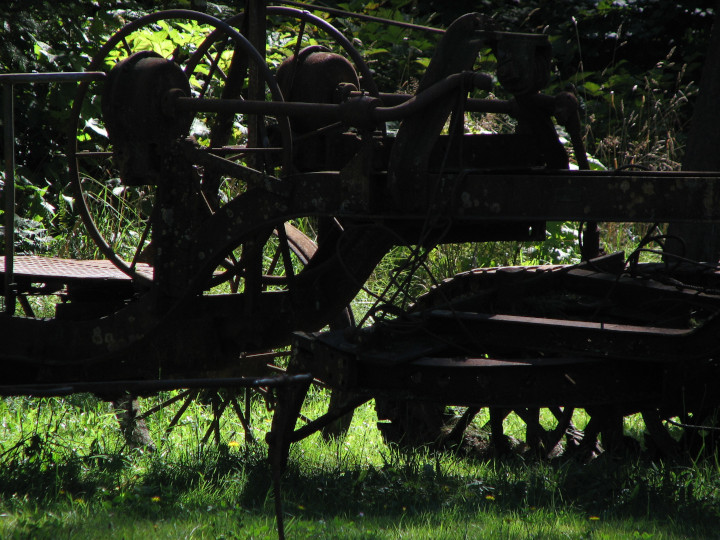
Language, Machinery and Nature
I've been
contemplating language usage ,
mechanisation, and humanity's
relationships with various
aspects of what we call nature.
I don't think people will ever
willingly reduce their reliance
on mechanical devices (although
it might be possible to reduce
humanity's blind obsession
with them), and I'm certainly
not bothering to advocate for
that. I also don't think it is
realistic to expect most people
to consciously re-evaluate and
restructure their use of
language in order to be more
aware of features of the natural
world. In fact, increased
awareness of the natural world
actually seems to upset many
people. So why bother writing
about it? Well, people learn
to be upset by things, and it is
at least possible that they can
learn something else if that is
appropriate.
In part of his book, Wonderful Life, Stephen J. Gould wrote about contingency and the nature of reality - and the reality of nature. Among other things, in this section he lamented the way our use of language has obscured the complexity of the process of scientific inquiry by tending to restrict the concept to a focus on controlled experimental practices. He rightly pointed out that there is much more to science than just controlled experimentation, and that we can come to know things like aspects of evolution, particle physics, and cosmology without being able to directly observe them.
It only makes sense to say that we know something if that something is consistent with many, many other things that careful study has allowed us to know over time. The more we know, the better equipped we are to reject bullshit, and even to imagine potential areas of knowledge not yet discovered. Of course, some new discoveries might apparently contradict established knowledge, but unless they can be integrated with that extensive existing body of knowledge in a coherent manner, they will only remain bullshit.
It seems to me that many people don't like what they have come to think of as complexity - that they have been trained to fear and to try to avoid it. (Complexity is sometimes described as "boring", as a face-saving mechanism.) Scientific inquiry, natural processes, social systems...all can be (and often are) presented to students and adults in ways that present a threatening, alienating sense of complexity rather than a multiplicity of interrelated subjects offering deep and varied interest. This seems to be only partly by accident. Complexity actually has a lot to offer, and can be the source of fulfilling life work.
In part of his book, Wonderful Life, Stephen J. Gould wrote about contingency and the nature of reality - and the reality of nature. Among other things, in this section he lamented the way our use of language has obscured the complexity of the process of scientific inquiry by tending to restrict the concept to a focus on controlled experimental practices. He rightly pointed out that there is much more to science than just controlled experimentation, and that we can come to know things like aspects of evolution, particle physics, and cosmology without being able to directly observe them.
It only makes sense to say that we know something if that something is consistent with many, many other things that careful study has allowed us to know over time. The more we know, the better equipped we are to reject bullshit, and even to imagine potential areas of knowledge not yet discovered. Of course, some new discoveries might apparently contradict established knowledge, but unless they can be integrated with that extensive existing body of knowledge in a coherent manner, they will only remain bullshit.
It seems to me that many people don't like what they have come to think of as complexity - that they have been trained to fear and to try to avoid it. (Complexity is sometimes described as "boring", as a face-saving mechanism.) Scientific inquiry, natural processes, social systems...all can be (and often are) presented to students and adults in ways that present a threatening, alienating sense of complexity rather than a multiplicity of interrelated subjects offering deep and varied interest. This seems to be only partly by accident. Complexity actually has a lot to offer, and can be the source of fulfilling life work.
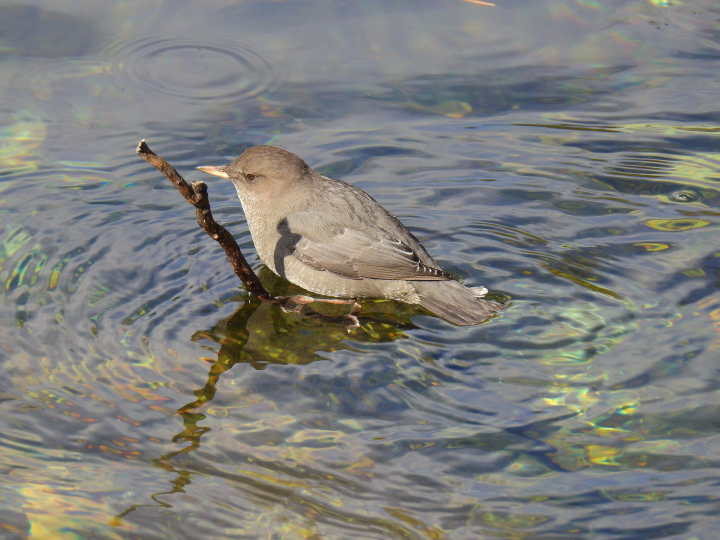
Language and Machinery
For all
society's apparent technological
elaboration, humans have only
very slowly refined our ideas
about our relationship with the
natural world. Our language, as
currently designed, does not
seem to be adequate. We are
quite preoccupied with
identifying and naming "things",
and furnishing them with a cloak
of adjectives. We rarely look at
"big" trees and also contemplate
what is going on under the
"parts" we can see - unless
their roots start to buckle some
pavement. And how many people
really care about what is going
on under the forest in some
distant valley, or What is
happening with the subsurface
flow of water that is not
visible?
Of course, a few people do study the subterranean world of forests and other ecosystems, but they have to work with the language and technological social context within which we currently exist. For example, humans manufacture and use lots of machines. Households in North America generally have some number of machines - automobiles, boats, RVs, lawn mowers, leaf blowers, computers, phones... We are used to interacting with nature and each other using machines. Even the term ecosystem seems to reflect our familiarity, (obsession?) with machines. (Much more can be said about this...)
It seems to me that much of the machinery that structures our interactions with nature performs multiple functions that might be important to be aware of. For one thing, that machinery certainly keeps us busy - in many cases, devices require a person's full attention while using them. In some cases, they can structure and control the way we think, or don't think, about the world. They do this by training our minds to carry out mental tasks. Observant observers have rightly pointed out that as the world becomes more complex, people need to be much better educated in order to cope with reality. Of course, a better educated populace is *not* in the interest of many of those in positions of power, who favour training above education. It's not really possible to train for the unexpected, especially when critical thinking has become so demonised.
In thinking of degrees of understanding, we might say for example that people who engage in bird watching may do so at different levels. The most basic level might involve learning to name and identify different species, and perhaps check them off on a list. Many bird watchers necessarily go beyond that and learn something about the details of various birds' lives - required habitat, feeding, mating and migration patterns, etc. Some people become quite passionate about some of the birds they encounter. Then additionally there are issues regarding the relationship between birds and other species and the broader environment including humanity - especially as the climate crisis alters so much of that environment.
Unfortunately, we can be trained to recognise some of the names of these issues, and to furnish the names with adjectives ( like "frightening", "threatening", "unsolvable") but unless whole populations become much better educated, we won't understand the extent of the complex interrelationships between them - and with humanity.
Of course, a few people do study the subterranean world of forests and other ecosystems, but they have to work with the language and technological social context within which we currently exist. For example, humans manufacture and use lots of machines. Households in North America generally have some number of machines - automobiles, boats, RVs, lawn mowers, leaf blowers, computers, phones... We are used to interacting with nature and each other using machines. Even the term ecosystem seems to reflect our familiarity, (obsession?) with machines. (Much more can be said about this...)
It seems to me that much of the machinery that structures our interactions with nature performs multiple functions that might be important to be aware of. For one thing, that machinery certainly keeps us busy - in many cases, devices require a person's full attention while using them. In some cases, they can structure and control the way we think, or don't think, about the world. They do this by training our minds to carry out mental tasks. Observant observers have rightly pointed out that as the world becomes more complex, people need to be much better educated in order to cope with reality. Of course, a better educated populace is *not* in the interest of many of those in positions of power, who favour training above education. It's not really possible to train for the unexpected, especially when critical thinking has become so demonised.
In thinking of degrees of understanding, we might say for example that people who engage in bird watching may do so at different levels. The most basic level might involve learning to name and identify different species, and perhaps check them off on a list. Many bird watchers necessarily go beyond that and learn something about the details of various birds' lives - required habitat, feeding, mating and migration patterns, etc. Some people become quite passionate about some of the birds they encounter. Then additionally there are issues regarding the relationship between birds and other species and the broader environment including humanity - especially as the climate crisis alters so much of that environment.
Unfortunately, we can be trained to recognise some of the names of these issues, and to furnish the names with adjectives ( like "frightening", "threatening", "unsolvable") but unless whole populations become much better educated, we won't understand the extent of the complex interrelationships between them - and with humanity.
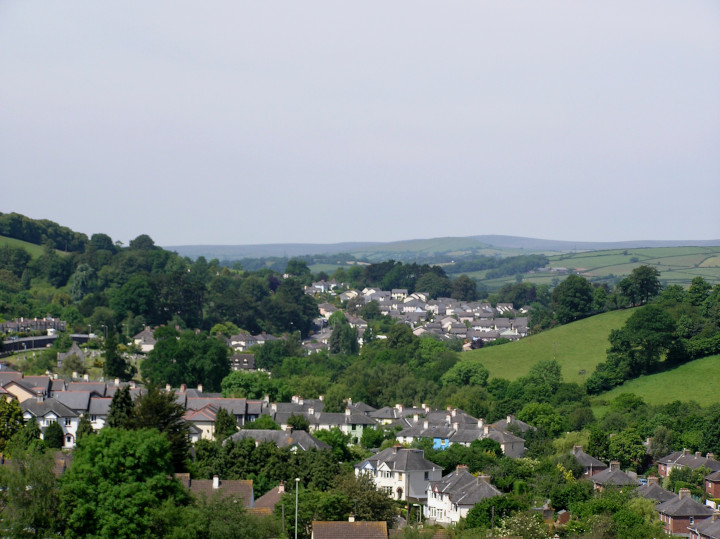
Invasive Narratives
Last week I mentioned reports of large numbers of giant sequoias currently growing in the United Kingdom - apparently many times more than still live in their native California. There was a suggestion that these trees are not an invasive species because they don't seem to be naturally reproducing. At least, not yet. Being large and attractive to humans has been effective, however, with regard to sheer numbers. Of course, it is not possible to import an ecosystem, so other California plant and animal species associated with giant sequoias have not gone along for the ride. That would be a rather different sort of invasiveness.
Many plants, particularly agricultural crops, that have been spread around the world are capable of natural reproduction in their widespread locations and have not out-competed native species. Potatoes, or apples, or even corn, for example. These are desirable foods, and are of course profitable to cultivate. Their proliferation and cultivation by humans does displace native species - often on a massive scale - but they are rarely called invasive. Efforts to feed 8+ billion humans do result in some inevitabilities. There are even species that are designated as "invasive", but are welcomed because they are expected to provide useful "services", like pest control.
When people observe "something", they generally use whatever narratives they have immediately available in order to think about it or to communicate aspects of that "something" with others. One possible narrative about the many giant sequoias that have been scattered around the UK, Europe, Australia, etc. is that they could provide "insurance" for the species if the climate crisis leads to their demise in California. This sort of narrative seems pathologically optimistic to me - if the climate crisis causes the eradication of California's giant sequoias, it won't stop there.
A related narrative suggests that giant sequoias grow so well in the UK that they could be planted in much larger numbers. These obviously couldn't be forests, but... Apparently the wood of mature giant sequoias is too brittle and fibrous to be useful for building, but the wood from immature trees (maybe <100 years old) is much stronger and very useful. Imagine planning for even a century hence, without really confronting the volatility of the present. But then, usually so-called "planning" for something decades in the future is little more than a story we tell ourselves in an attempt to feel better.
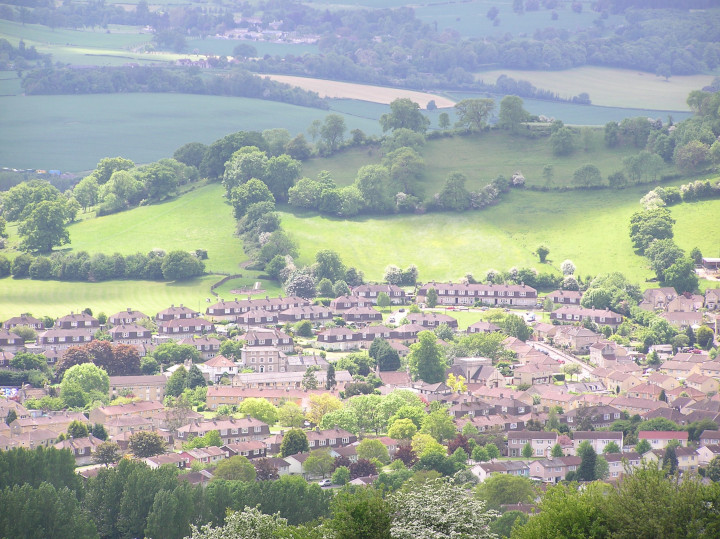
Invasive Landscapes
Recently there has been a mini-flurry of articles announcing that there are currently an estimated 500,000 "giant redwoods" growing in the United Kingdom. That's quite an estimate. This information appeared in The Conversation, and then in The Guardian UK and ars Technica - all of which pointed out that this large number of trees far surpassed the approximately 80,000 giant sequoias growing naturally in the foothills of the Sierra Nevada in California. Some of the reporting seemed a bit hazy about the distinction between giant sequoias (Sequoiadendron giganteum) and coast redwoods (Sequoia sempervirens), but to think that such a large number of individual giant sequoias have been imported and planted in the UK over the last century and a half is at least surprising.
Neither the articles in the media, nor the Royal Society journal article on which they are based, provide any details about how the estimate of the number of giant sequoia trees in the UK was derived. The large number of trees involved did merit a brief mention of the question of invasive species, but that was tempered by the observation that the sequoias aren't (yet?) reproducing naturally in the UK. (The giant sequoias only reproduce from seed from mature trees, but the coast redwoods can also reproduce vegetatively from shoots.) Predictably, the media accounts noted that these are all very BIG trees: the tallest and most massive in the world. They were presented as potentially useful trees too - they can sequester a lot of carbon and perhaps help mitigate global heating. Groves of them can indeed be cool, calming refuges for people who seek them out.
It is interesting that giant sequoias seem to grow so well in the UK. The climate, terrain and ecosystems there are very different from the western slopes of the Sierra Nevada in California where they now naturally occur. As reported, they were first imported to the UK in the 1850s as expensive status symbols by wealthy individuals who planted them around their estates, and many have been planted since in parks and gardens. It seems mildly ironic (or maybe symbolic) that what attracted their early collectors - the great size of the sequoias - could never be achieved in a human lifetime.
When we mapped the hundreds of giant sequoias planted around Victoria, British Columbia, the number of trees was more than we initially expected. To an extent, even famously large trees can become hidden in plain sight in a city. Of course, trees scattered throughout an urban landscape mean something quite different than a forest of the same species growing in their natural habitat. People do move things around, for a variety of reasons, and now there do appear to be more giant sequoia trees spread around the United Kingdom than remain in California - no forests, of course. That would take a while.
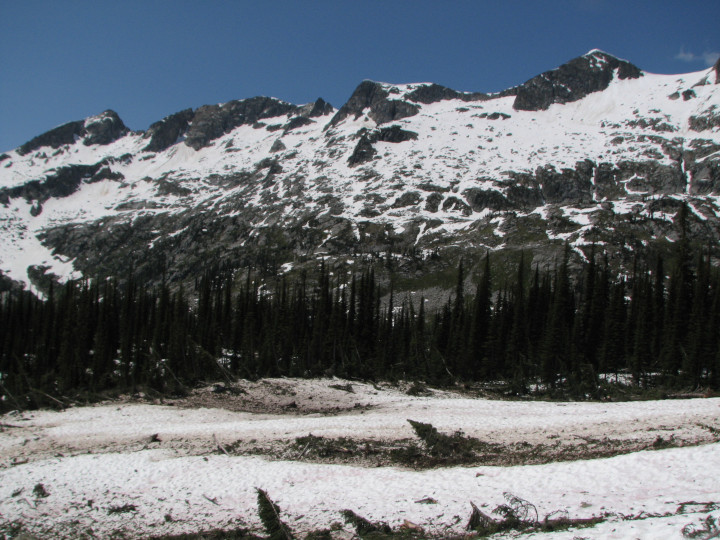
Why Ask Why
We have a pretty
good idea how the giant sequoias
and coast redwoods ended up in
Victoria, British columbia. They
were planted there at various
times by people who acquired
seedlings from California, where
they still naturally occur. We
have a much hazier idea of how
the alpine water voles I
mentioned last week came to be
where they currently live high
in the north western mountains.
Until the final retreat of the
last glacial ice around 10,000
years ago, none of the habitat
they require would have begun to
exist. Perhaps they followed the
grasses and shrubs and forests
north as the thick ice
disappeared.
We can ask "why" the giant sequoias are now in Victoria: in it's simplest form, the answer is because some people wanted to plant them there. (Humans have moved them there unnaturally, for various personal reasons.) We could also ask "why" the alpine water voles are living where they are, but that question is both much more problematic, and more potentially instructive. In it's most direct form, the answer might be that the voles just ended up there naturally, but that seems to skip over quite a lot. The use of the "why" question might seem innocuously equivalent in the two questions, but it is not.
All "why" questions can be pursued into an interminable muddle, but historically people have had a contentious involvement with "why" questions concerning the concept of evolution. Once such questions slide away from poorly conceived "how did this happen" queries, thinking tends to deteriorate. Studies of the genetics of alpine water voles indicate that they have been widespread in the northern hemisphere for perhaps as long as 14 million years, and have now adapted to a diversity of current habitats. That such a small mammal could spread so widely despite multiple glaciations, and now populate alpine habitats that are buried in snow for much of the year, is certainly remarkable. Of course it took a while. People understandably have difficulty appreciating what a million years really means for processes that evolve.
When we ask "why" questions about human actions, we have at least some common experience to apply to our reasoning (however misleading that can often be). We may have some evidence of other people's purposes to guide us. Creatures like water voles cannot reasonably be said to have the sorts of purposes humans have, which shouldn't be surprising because they don't live at all like humans do. Asking questions like "why" alpine water voles live where they do is often not just a way of searching for details of "how" they ended up there after millions of years of morphological, geological, environmental, and climatic changes.
We've got this word "why" hanging around. It's a perfectly acceptable word, at least in some situations. It can provide satisfying results, and we get used to using it. When we ask questions about evolution, and nature, this can result in considerable confusion. Nature and evolution have no "purposes" in the sense that humans have come to understand the term. That makes some people uncomfortable. Perhaps that is partly because they don't know enough about how old and complex the processes they are part of really are.
We can ask "why" the giant sequoias are now in Victoria: in it's simplest form, the answer is because some people wanted to plant them there. (Humans have moved them there unnaturally, for various personal reasons.) We could also ask "why" the alpine water voles are living where they are, but that question is both much more problematic, and more potentially instructive. In it's most direct form, the answer might be that the voles just ended up there naturally, but that seems to skip over quite a lot. The use of the "why" question might seem innocuously equivalent in the two questions, but it is not.
All "why" questions can be pursued into an interminable muddle, but historically people have had a contentious involvement with "why" questions concerning the concept of evolution. Once such questions slide away from poorly conceived "how did this happen" queries, thinking tends to deteriorate. Studies of the genetics of alpine water voles indicate that they have been widespread in the northern hemisphere for perhaps as long as 14 million years, and have now adapted to a diversity of current habitats. That such a small mammal could spread so widely despite multiple glaciations, and now populate alpine habitats that are buried in snow for much of the year, is certainly remarkable. Of course it took a while. People understandably have difficulty appreciating what a million years really means for processes that evolve.
When we ask "why" questions about human actions, we have at least some common experience to apply to our reasoning (however misleading that can often be). We may have some evidence of other people's purposes to guide us. Creatures like water voles cannot reasonably be said to have the sorts of purposes humans have, which shouldn't be surprising because they don't live at all like humans do. Asking questions like "why" alpine water voles live where they do is often not just a way of searching for details of "how" they ended up there after millions of years of morphological, geological, environmental, and climatic changes.
We've got this word "why" hanging around. It's a perfectly acceptable word, at least in some situations. It can provide satisfying results, and we get used to using it. When we ask questions about evolution, and nature, this can result in considerable confusion. Nature and evolution have no "purposes" in the sense that humans have come to understand the term. That makes some people uncomfortable. Perhaps that is partly because they don't know enough about how old and complex the processes they are part of really are.
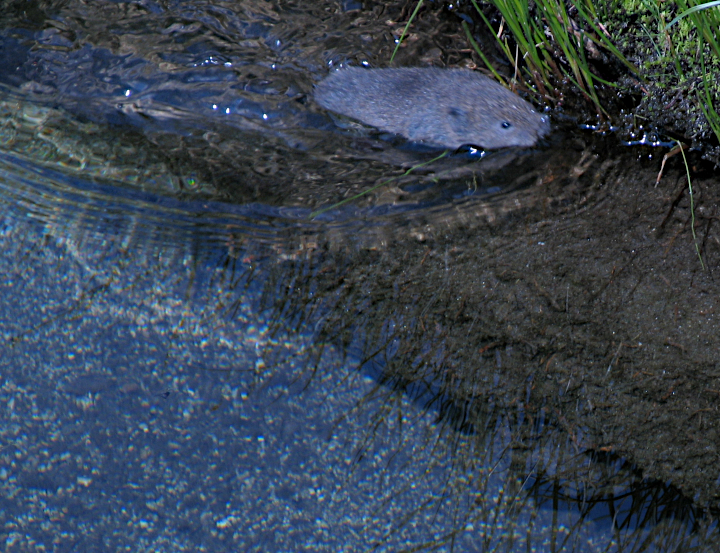
A Break from Text-Generated Un-realities
Between about
1,000 and 3,000 metres of
elevation, in western mountain
ranges in North America, small
aquatic rodents called water
voles live along small alpine
meadow streams. They are not
easy to see - partly because
they are largely nocturnal, but
I think also because they are so
unobtrusive compared to the
grandeur of their surroundings.
They are very good swimmers, and
entrances to their burrows are
located underwater in the stream
banks. It is usually easier to
spot some burrow entrances than
the voles themselves.
Once you realize they are there, swimming in snow-melt-fed streams where the frozen grip of winter can last 8 months each year, you might well wonder how they manage. Apparently, with a high metabolic rate and a very short lifespan, each individual does not manage for very long. They are active all winter in tunnels they dig under the snow, and then most die before the next winter. If you are skiing or hiking early in the season when there is still significant snow cover, you might be passing above busy water voles below (and also rock-dwelling North American pikas, little mammals related to rabbits). As they say, out of sight, out of mind. And look: majestic mountains!
I wonder less about what seems majestic to people (training seems to have a lot to do with it) than I wonder how so many remarkable species are so little known. On the other hand, considering common human behaviour, perhaps it is just as well that some vulnerable creatures are not subjected to stomping crowds of gawkers. As things stand, it would be difficult to integrate a more complete understanding of some other creatures lives with the goals and aspirations of most humans. But knowing that they live their lives in such apparently inhospitable surroundings might stimulate someone's imagination.
Are their surroundings really "inhospitable"? Anthropocentrism might lead us to think so, but evolution indicates otherwise. Many creatures live their lives in environments where humans could not - from the ocean depths to the highest mountains - but it would be silly to think that they would rather be more "comfortable". It is a wonder that creatures can live in such places because the places themselves are amazing, not just because the creatures can do something that humans cannot do. It is a wonder that there are so many many different kinds of habitats that other creatures have adapted to.
There is no reason to suppose that alpine water voles might speculate about how humans manage to live the way they do.
Once you realize they are there, swimming in snow-melt-fed streams where the frozen grip of winter can last 8 months each year, you might well wonder how they manage. Apparently, with a high metabolic rate and a very short lifespan, each individual does not manage for very long. They are active all winter in tunnels they dig under the snow, and then most die before the next winter. If you are skiing or hiking early in the season when there is still significant snow cover, you might be passing above busy water voles below (and also rock-dwelling North American pikas, little mammals related to rabbits). As they say, out of sight, out of mind. And look: majestic mountains!
I wonder less about what seems majestic to people (training seems to have a lot to do with it) than I wonder how so many remarkable species are so little known. On the other hand, considering common human behaviour, perhaps it is just as well that some vulnerable creatures are not subjected to stomping crowds of gawkers. As things stand, it would be difficult to integrate a more complete understanding of some other creatures lives with the goals and aspirations of most humans. But knowing that they live their lives in such apparently inhospitable surroundings might stimulate someone's imagination.
Are their surroundings really "inhospitable"? Anthropocentrism might lead us to think so, but evolution indicates otherwise. Many creatures live their lives in environments where humans could not - from the ocean depths to the highest mountains - but it would be silly to think that they would rather be more "comfortable". It is a wonder that creatures can live in such places because the places themselves are amazing, not just because the creatures can do something that humans cannot do. It is a wonder that there are so many many different kinds of habitats that other creatures have adapted to.
There is no reason to suppose that alpine water voles might speculate about how humans manage to live the way they do.

Text Generated Un-realities
Almost a year ago, during the initial hype campaign for Large Language Model (LLM) based text generators, I noted some of the dangers such a misguided technology posed for nature, and human society. That technology has steamed along since, and recently a derivative that can output video from text prompts has been announced. Soon enough, I expect, we will see even more videos of animated creatures, singing, dancing, and speaking English. Maybe even big-eyed, big-lipped zooplankton...why not?
Of course we have had animated films and videos of talking creatures for some time, so why worry? The dangers to nature and society seem to be inextricably connected. As societies become degraded by technologically-boosted lies and pathological propaganda, nature will also become degraded - and that in turn will further degrade societies dependent upon it. When people are bombarded with attractive falsehoods, they can lose the ability to identify truth and cease trying to apply critical thinking. Critical thinking in a population is not highly valued by most regimes.
But surely, you might think, what harm could a few more endearing, animated talking creatures cause? Isn't this overreaction? So far, much of the alarm expressed about "AI" ("Artificial Intelligence") and LLM based text generators has focused on machines learning to be "more intelligent" than humans, and potentially deciding to do away with us. That is overreaction, and certainly misplaced focus. As some more reflective critics have pointed out, "AI" is not, and cannot, become intelligent in the sense that we attribute that concept to humans. You need to be a human, and have human experiences, to acquire that kind of intelligence. Machines could be programmed (by humans) to decide to do away with humans, but that is quite different (and it would have nothing to do with intelligence). (Indeed, various military forces are currently working on perfecting robots that can kill enemies. Are robot proxy wars coming up when multiple nations have robot armies fighting each other?)
What videos of cute, animated talking creatures do is occupy developing minds with completely false portrayals of reality. When effects of early exposure to fake anthropomorphised creatures are reinforced with continuing later exposure to lies and pathological propaganda, it is no wonder that humanity's interdependence with nature is misunderstood and ignored. Until more resources are provided to help developing humans experience actual nature than are currently devoted to cartoon characterizations, this is unlikely to change.
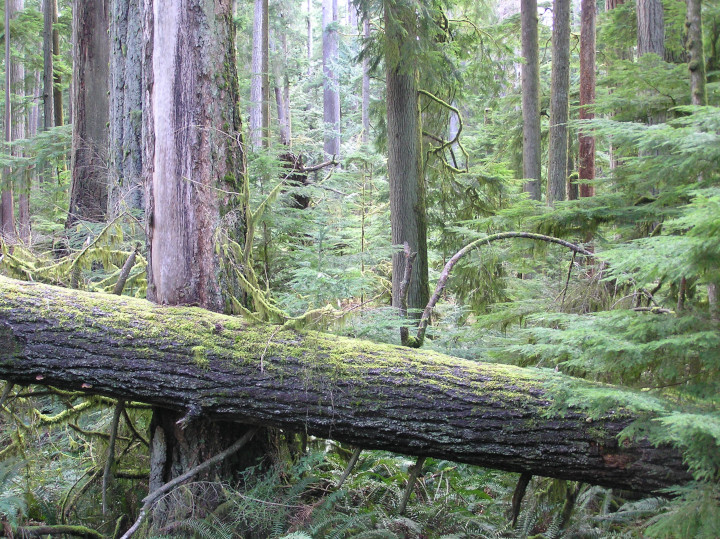
An Old Anthropocentric Question
Not if, but when, a tree falls...
During the last few centuries, some humans have been entertained by the goofy question: "If a tree falls in the forest, and there is nobody (human) there, does it make any sound?" I think the question is as thoughtlessly anthropocentric as it is revealing.
We know that pressure waves in air produce the sense of sound in our ears. We've known that for a long time. The definition of "sound" is central to the tree falling question. Some people have even claimed that "sound" is "what humans hear". However, if that definition is used, the question is trivially circular. Obviously if "sound" requires a human and none are present, that sort of "sound" won't exist.
It is just as obvious that sound as pressure waves in air will exist when a tree falls. That's simple physics. A human observer is not necessary to establish that. All of the other creatures living nearby in the forest will experience the sound of the falling tree. Humanity has shown very little concern for the effects of sound on other creatures.(Of course, it has also shown little enough concern for the effects of sound on humans.) But the historical debate about the question of sound from falling trees provides another example of the self-centeredness of human contemplation of nature's complexity. (And the narrow self-centeredness of previous attempts to define what it is to be human in the surrounding world.)
That debate about falling trees and sound has traditionally entangled concepts of reality in implicit and explicit dependence on human awareness and observation. In that framework, not only would nature not exist when not observed by humans, nor would the rest of the universe, somehow. In a sense, socially, that is reality for many people. Nature might as well not exist when people carry out their business as usual. That has apparently worked (however poorly) for a few centuries. But we know that many millions of years of complex biological evolution took place without a single human observer.
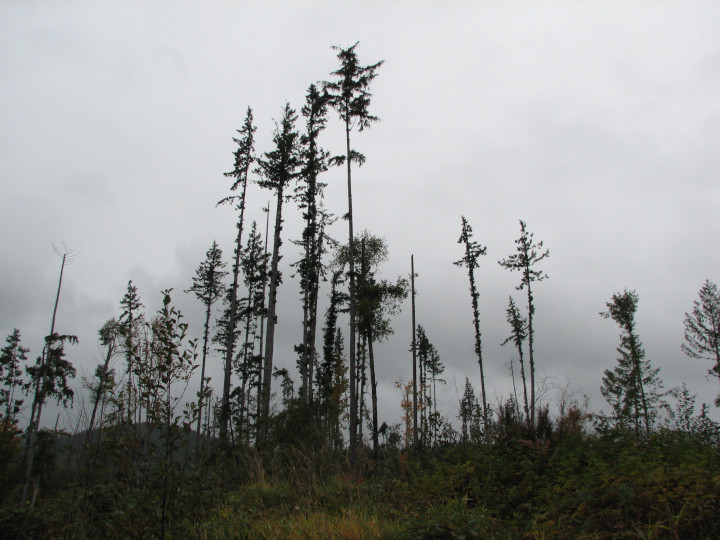
More Unnatural Nature
I'm sitting in
an automobile, surrounded by
nature. Well, except for the
road. Ah, and the automobile.
And...yes, all of the invisible
social/industrial infrastructure
and operations that make the
road and the automobile
possible...
In significant ways, the impact of humanity's collective activities have effectively made the world much smaller. It is happening at a rate that is imperceptible to most people - reflecting the amount of knowledge they have acquired. It is not even surprising that masses of people flying internationally who look down at spreading civilization are so little impressed by the visual evidence. But of course, there is in-flight entertainment.
When people travel and see what looks like a lot of "empty space", or a "lot of trees", they rarely wonder about how they acquired the assumptions that underlie their sense of scale. Some creatures - birds, mammals, fish - once existed in uncountable numbers, as a result of co-evolving slowly with their environments. Now they would be completely incompatible with the world humans are remaking. (It is difficult - okay, absurd - to imagine vast herds of wild bison thriving in contemporary North America. And who would want them?) Seemingly limitless numbers have been no guarantee of continued existence, and "empty" spaces have (quickly) become occupied.
I guess this could be called the (Ineffective) Implicit Utilitarian Argument - the warning that we might lose currently useful or attractive species through careless actions. Most people don't feel personally affected by declining populations of wild species - not with all that in-flight entertainment. Social pressures (feasting previously, and now monetary gains) among humans have long over-ridden any serious considerations of conservation.
Those who do have grave concerns about vanishing species, and have a sense of even greater impending loss, are left to observe the relentless campaign of human progress, and attempt to appreciate what still remains. Realism can be depressing. Why, it's almost enough to drive a person to Existentialism. But for those who learn something about the complexity of what we call nature, appreciation can still have significant rewards.
In significant ways, the impact of humanity's collective activities have effectively made the world much smaller. It is happening at a rate that is imperceptible to most people - reflecting the amount of knowledge they have acquired. It is not even surprising that masses of people flying internationally who look down at spreading civilization are so little impressed by the visual evidence. But of course, there is in-flight entertainment.
When people travel and see what looks like a lot of "empty space", or a "lot of trees", they rarely wonder about how they acquired the assumptions that underlie their sense of scale. Some creatures - birds, mammals, fish - once existed in uncountable numbers, as a result of co-evolving slowly with their environments. Now they would be completely incompatible with the world humans are remaking. (It is difficult - okay, absurd - to imagine vast herds of wild bison thriving in contemporary North America. And who would want them?) Seemingly limitless numbers have been no guarantee of continued existence, and "empty" spaces have (quickly) become occupied.
I guess this could be called the (Ineffective) Implicit Utilitarian Argument - the warning that we might lose currently useful or attractive species through careless actions. Most people don't feel personally affected by declining populations of wild species - not with all that in-flight entertainment. Social pressures (feasting previously, and now monetary gains) among humans have long over-ridden any serious considerations of conservation.
Those who do have grave concerns about vanishing species, and have a sense of even greater impending loss, are left to observe the relentless campaign of human progress, and attempt to appreciate what still remains. Realism can be depressing. Why, it's almost enough to drive a person to Existentialism. But for those who learn something about the complexity of what we call nature, appreciation can still have significant rewards.
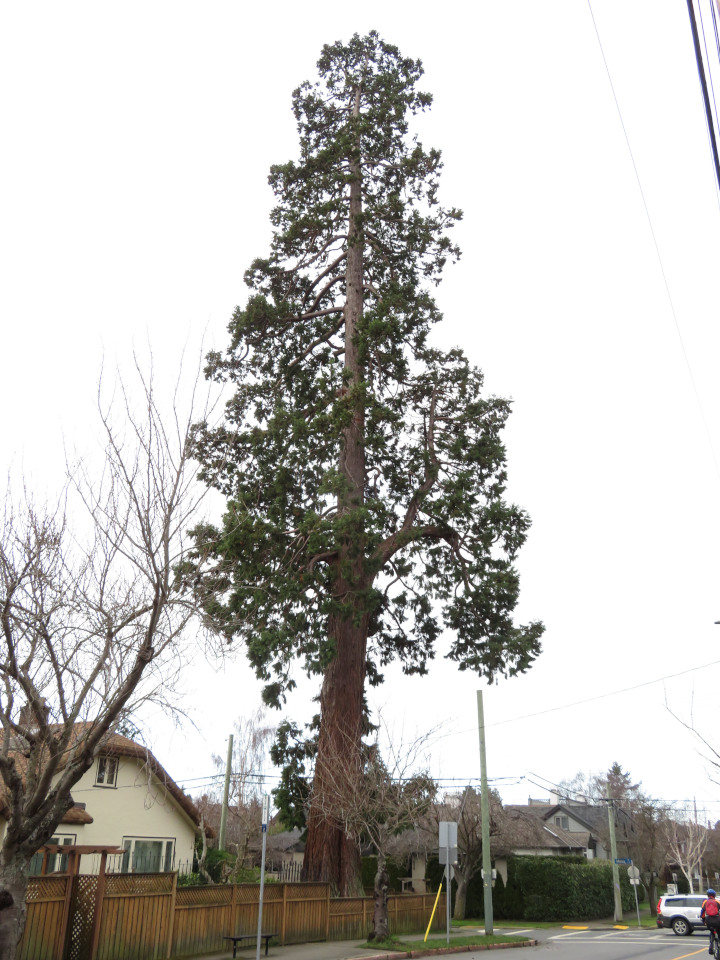
Unnatural Nature
I'm thinking
about the giant sequoias that
are growing in and around
Victoria, again. There are
hundreds of them scattered
about, and they look healthy. A
few have been growing for a
century or more, although most
are younger. Will any still be
alive a thousand years from now?
In their natural habitat far to
the south, trees of this species
can live for 3,000-4,000 years.
It's probably silly to wonder
what Victoria might look like in
3,000 years. Long before that,
the giant trees planted in
people's yards will have become
too large (or have been declared
too dangerous) for their
surroundings.
All kinds of exotic trees are planted around Victoria, and many of them appear to be doing well despite their unnatural location. Some exotic species (not giant sequoias) are used as street trees - which add greatly to the livability of the city, from a human perspective. Although many factors shorten their lives, it is impressive that street trees can grow even as well as they seem to in such unnatural conditions, smothered by buildings and pavement. Of course, many other enclosed creatures manage to stay alive for relatively long periods in confined captivity.
Considered in context, with a world continually beset with international conflicts, economic crises, periodic pandemics, and a side order of climate disintegration, it is understandable that people rarely wonder about the "well-being" of trees. After all, trees are replaceable - there are plenty more where those came from. Trees, habitats, ecosystems...aren't they all "replaceable"? Maybe the assumptions behind our ideas about "replacing" things would merit some closer examination.
All kinds of exotic trees are planted around Victoria, and many of them appear to be doing well despite their unnatural location. Some exotic species (not giant sequoias) are used as street trees - which add greatly to the livability of the city, from a human perspective. Although many factors shorten their lives, it is impressive that street trees can grow even as well as they seem to in such unnatural conditions, smothered by buildings and pavement. Of course, many other enclosed creatures manage to stay alive for relatively long periods in confined captivity.
Considered in context, with a world continually beset with international conflicts, economic crises, periodic pandemics, and a side order of climate disintegration, it is understandable that people rarely wonder about the "well-being" of trees. After all, trees are replaceable - there are plenty more where those came from. Trees, habitats, ecosystems...aren't they all "replaceable"? Maybe the assumptions behind our ideas about "replacing" things would merit some closer examination.